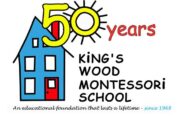Lead teachers plan the lessons and prepare the classroom with materials a child needs to complete each lesson.
Shown in the gallery (clockwork left to right):
The book Sneezy the Snowman was read in class, and as an extension to the book, the teacher prepared an art corner with printouts and markers for children to color their snowmen and write their own stories. To celebrate the Lunar New Year, the table was prepared with materials for children to make their own Zodiac books as they practice fine motor skills. As part of the Space unit, children trace each planet to make their book of planets. Cooking and baking are part of the curriculum. In the last picture, you see a child baking banana bread. All the materials and instructions are laid out in the baking corner. The child follows the directions to make his banana bread to take home and share with loved ones. Initially, the teacher guides the child, but by the end of the year, most children independently assemble the bread and bring it to the teacher to bake.
The teachers observe and take detailed notes on each child throughout the day, including the work they complete and the work they are interested in exploring. Based on those observations, the teacher plans the lessons to present to the child.
Shown in the gallery (clockwork left to right):
After successfully mastering counting and number recognition, the child is introduced to the counting activity that combines quantity and symbol. In the second picture, the child uses wooden words to match the word to the picture. This lesson is presented after the child has mastered rhyming, beginning sounds, segmenting, and blending. As the child is learning to read, they are simultaneously learning to write. Materials like metal insets that are perfect for indirect preparation for writing. These exercises teach children to hold a pencil by strengthening their pincer grip, preparing them to write from left to right, and the light-controlled movements needed when writing. In the last picture, the child forms words with the vowel ‘e’ as the constant, copies the pictures on paper, and writes the words.
With each lesson, the teacher meets the child where he is and finds ways to engage him by keeping the lessons interesting and relevant. She uses objects children see in their everyday lives and plans lessons that provide a challenge while still being interesting. Scaffolding their learning in such a manner will avoid boredom while helping children advance to the next step in their educational journey.
Shown in the gallery (clockwork left to right):
Children traced their shadows as they learned about space and the sun’s position at different times of the year. In the second picture, the child matches the Chinese Zodiac signs as they learn about the Lunar New Year.
When movement is united with the mind, it becomes purposeful. In the third and fourth pictures, you see children working on a scavenger hunt and building structures using the brown stairs and pink cubes. Both lessons are prepared to incorporate movement to engage the child. As the child goes back and forth, bringing the material to the mat or traveling the classroom in search of the items for the scavenger hunt, he satisfies his need for movement and is, therefore, more engaged and focused.

